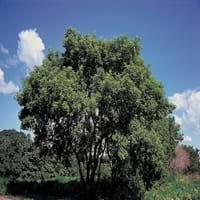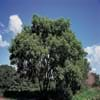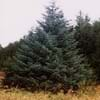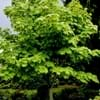Life Span
Perennial
Perennial
Type
Tree
Flowering Plants, Shrubs
Origin
North America, United States, Northeastern United States, Mid-Atlantic United States, Southeastern United States, North-Central United States, Central United States, South-Central United States, Texas, Canada
Asia, North America, Southern Europe
Types
Ash leaves maple, Acer negundo califormicum tehachapi, Acer negundo Flamingo
Aristocrat, Buckeye Belle, Henry Bockstoce , Abalone Pearl, Coral Supreme, Cytherea, Charlie's White
Number of Varieties
Not Available
Habitat
Anthropogenic, Floodplains, Forests, Shores of rivers or lakes, Terrestrial
Hillside, Woods
USDA Hardiness Zone
2-8
3-9
Sunset Zone
A2, A3, 1a, 1b, 2a, 2b, 3a, 3b, 4, 5, 6, 7, 8, 9, 10, 12, 13, 14, 15, 16, 17, 18, 19, 20, 21, 22, 23, 24
A3, 1a, 1b, 2a, 2b, 3a, 3b, 4, 5, 6, 7, 8, 9, 10, 11, 12, 13, 14, 15, 16, 17, 18, 19, 20, 22
Habit
Oval or Rounded
Clump-Forming
Flower Color
Red, Yellow green, Dark Red
Pink, Red, White
Flower Color Modifier
Bicolor
Not Available
Fruit Color
Green, Tan
Not Available
Leaf Color in Spring
Green, Light Green
Dark Green
Leaf Color in Summer
Green
Dark Green, Green
Leaf Color in Fall
Yellow, Yellow green, Brown
Bronze, Dark Green, Green
Leaf Color in Winter
Not Available
Not Available
Leaf Shape
Broadly Ovate
Compound
Plant Season
Spring, Fall
Spring
Sunlight
Full Sun, Partial Sun, Partial shade
Full Sun, Part sun
Type of Soil
Clay, Loam, Sand
Loamy
The pH of Soil
Acidic, Neutral, Alkaline
Neutral
Soil Drainage
Average
Well drained
Bloom Time
Early Spring, Spring
Spring, Summer
Tolerances
Wet Site, Pollution, Drought, Soil Compaction
Not Available
Where to Plant?
Ground
Ground, Pot
How to Plant?
Rooted stem cutting, Seedlings
Grafting, Seedlings, Stem Planting, Transplanting
Plant Maintenance
Medium
Medium
Watering Requirements
Average Water Needs, Needs watering once a week
Does not require lot of watering, It cannot sustain wet-feet, Keep the ground moist but not water-logged, Needs watering once a week, Prefer drip-irrigation instead of Over-head watering, Water occasionally
In Summer
Lots of watering
Lots of watering
In Spring
Moderate
Moderate
In Winter
Average Water
Average Water
Soil pH
Acidic, Neutral, Alkaline
Neutral
Soil Type
Clay, Loam, Sand
Loamy
Soil Drainage Capacity
Average
Well drained
Sun Exposure
Full Sun, Partial Sun, Partial shade
Full Sun, Part sun
Pruning
Prune every year, Prune in early spring, Prune in late winter, Remove branches, Remove damaged leaves, Remove dead branches, Remove dead leaves, Remove dead or diseased plant parts
Do not prune during shooting season, Prune to control growth, Remove dead or diseased plant parts, Remove deadheads
Fertilizers
All-Purpose Liquid Fertilizer
All-Purpose Liquid Fertilizer
Pests and Diseases
Red blotch
Botrytis Blight, Leaf spot, Stem spot, Viruses
Plant Tolerance
Drought, Pollution, Soil Compaction, Wet Site
Drought
Flower Petal Number
Not Available
Semi-Double
Foliage Texture
Medium
Coarse
Foliage Sheen
Matte
Glossy
Attracts
Aphids, Birds, Squirrels
Ants
Allergy
Asthma, Runny nose, Skin irritation
Not Available
Aesthetic Uses
Bonsai
Beautification, Bouquets, Showy Purposes, Used for decorating walls, fences, gates, hedges, etc.
Beauty Benefits
Not Available
Not Available
Environmental Uses
Air purification, Shadow Tree, Wildlife
Air purification
Medicinal Uses
Antidote, Antiemetic
Cough, Gout, Headache, Heartburn, Kidney problems, Upset stomach, Urinary tract problems
Part of Plant Used
Flowers, Fruits, Leaves, Seeds
Flowers, Root, Seeds
Other Uses
Can be made into a herbal tea, Decoration Purposes, Edible syrup, Used as essential oil, Used As Food, Used as Ornamental plant, Wood log is used in making fences
Showy Purposes, Used as Ornamental plant, Used for fragrance
Used As Indoor Plant
No
No
Used As Outdoor Plant
Yes
Yes
Garden Design
Screening / Wind Break
Feature Plant, Foundation, Mixed Border
Botanical Name
ACER negundo
Paeonia lactiflora
Common Name
Ash-Leaved Maple, Boxelder
Herbaceous Peony
In Hindi
Boxelder tree
Herbaceous peony
In German
Boxelder Baum
Krautige Pfingstrose
In French
arbre boxelder
pivoines herbacées
In Spanish
árbol boxelder
peonía herbáceas
In Greek
κουφοξυλιά δέντρο
ποώδη παιωνία
In Portuguese
árvore Boxelder
peônia herbáceas
In Polish
Boxelder drzewo
piwonii zielnych
In Latin
Boxelder ligno
herbaceum AGLAOPHOTIS
Phylum
Magnoliophyta
Magnoliophyta
Class
Magnoliopsida
Magnoliopsida
Order
Sapindales
Not Available
Family
Aceraceae
Paeoniaceae
Clade
Angiosperms, Eudicots, Rosids
Angiosperms, Core eudicots, Eudicots
Tribe
Not Available
Not Available
Subfamily
Not Available
Not Available
Number of Species
Not Available
Importance of Boxelder and Chinese Peony
Want to have the most appropriate plant for your garden? You might want to know the importance of Boxelder and Chinese Peony. Basically, these two plants vary in many aspects. Compare Boxelder and Chinese Peony as they differ in many characteristics such as their life, care, benefits, facts, etc. Every gardener must at least have the slightest clue about the plants he wants to plant in his garden. Compare their benefits, which differ in many ways like facts and uses. The medicinal use of Boxelder is Antidote and Antiemetic whereas of Chinese Peony is Cough, Gout, Headache, Heartburn, Kidney problems, Upset stomach and Urinary tract problems. Boxelder has beauty benefits as follows: Not Available while Chinese Peony has beauty benefits as follows: Not Available.
Compare Facts of Boxelder vs Chinese Peony
How to choose the best garden plant for your garden depending upon its facts? Here garden plant comparison will help you to solve this query. Compare the facts of Boxelder vs Chinese Peony and know which one to choose. As garden plants have benefits and other uses, allergy is also a major drawback of plants for some people. Allergic reactions of Boxelder are Asthma, Runny nose and Skin irritation whereas of Chinese Peony have Not Available respectively. Having a fruit bearing plant in your garden can be a plus point of your garden. Boxelder has no showy fruits and Chinese Peony has no showy fruits. Also Boxelder is flowering and Chinese Peony is flowering. You can compare Boxelder and Chinese Peony facts and facts of other plants too.





